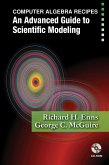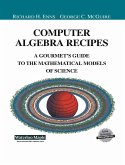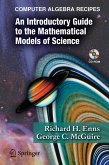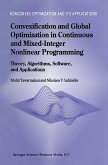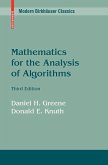Continuous System Simulation describes systematically and methodically how mathematical models of dynamic systems, usually described by sets of either ordinary or partial differential equations possibly coupled with algebraic equations, can be simulated on a digital computer.
Modern modeling and simulation environments relieve the occasional user from having to understand how simulation really works. Once a mathematical model of a process has been formulated, the modeling and simulation environment compiles and simulates the model, and curves of result trajectories appear magically on the user's screen. Yet, magic has a tendency to fail, and it is then that the user must understand what went wrong, and why the model could not be simulated as expected.
Continuous System Simulation is written by engineers for engineers, introducing the partly symbolical and partly numerical algorithms that drive the process of simulation in terms that are familiar to simulation practitioners with an engineering background, and yet, the text is rigorous in its approach and comprehensive in its coverage, providing the reader with a thorough and detailed understanding of the mechanisms that govern the simulation of dynamical systems.
Continuous System Simulation is a highly software-oriented text, based on MATLAB. Homework problems, suggestions for term project, and open research questions conclude every chapter to deepen the understanding of the student and increase his or her motivation.
Continuous System Simulation is the first text of its kind that has been written for an engineering audience primarily. Yet due to the depth and breadth of its coverage, the book will also be highly useful for readers with a mathematics background. The book has been designed to accompany senior and graduate students enrolled in a simulation class, but it may also serve as a reference and self-study guide for modeling andsimulation practitioners.
Modern modeling and simulation environments relieve the occasional user from having to understand how simulation really works. Once a mathematical model of a process has been formulated, the modeling and simulation environment compiles and simulates the model, and curves of result trajectories appear magically on the user's screen. Yet, magic has a tendency to fail, and it is then that the user must understand what went wrong, and why the model could not be simulated as expected.
Continuous System Simulation is written by engineers for engineers, introducing the partly symbolical and partly numerical algorithms that drive the process of simulation in terms that are familiar to simulation practitioners with an engineering background, and yet, the text is rigorous in its approach and comprehensive in its coverage, providing the reader with a thorough and detailed understanding of the mechanisms that govern the simulation of dynamical systems.
Continuous System Simulation is a highly software-oriented text, based on MATLAB. Homework problems, suggestions for term project, and open research questions conclude every chapter to deepen the understanding of the student and increase his or her motivation.
Continuous System Simulation is the first text of its kind that has been written for an engineering audience primarily. Yet due to the depth and breadth of its coverage, the book will also be highly useful for readers with a mathematics background. The book has been designed to accompany senior and graduate students enrolled in a simulation class, but it may also serve as a reference and self-study guide for modeling andsimulation practitioners.
From the reviews: "This is a graduate-level textbook, a sequel to continuous system modeling ... . The text provides a plentiful number of exercises and projects at various levels of difficulty. Each chapter has a carefully selected list of references." (William J. Satzer jun, Zentralblatt MATH, Vol. 1112 (8), 2007)



